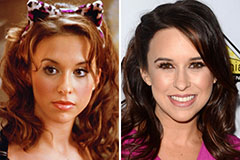What Back Issues Commonly Bring About Surgical Treatments for Alleviation?
Spine concerns that necessitate surgical intervention typically occur when conventional treatment options fail to offer sufficient relief from persistent discomfort and useful impairment. Conditions such as herniated discs, back stenosis, and degenerative disc illness frequently cause procedures targeted at easing symptoms and recovering mobility. Comprehending the specific indicators for surgery and the kinds of interventions readily available is important for both clients and health care companies. As we explore the complexities surrounding these spinal column problems, it comes to be evident that the choice to seek surgical options is diverse and warrants cautious factor to consider.

Herniated Discs
When conventional treatments fall short,Herniated discs are an usual back problem that regularly leads to surgical intervention. This problem occurs when the soft internal gel of a spine disc sticks out through a tear in the tougher external layer, possibly compressing nearby nerves. Signs and symptoms usually consist of localized discomfort, radiating discomfort in the arm or legs, and neurological deficiencies such as prickling or weak point.

Surgery aims to ease pain and restore function by eliminating the herniated part of the disc or maintaining the affected spinal segment. While numerous individuals experience substantial renovation following surgery, it is vital to weigh the benefits and risks in assessment with a qualified spinal column expert. Inevitably, prompt treatment is vital to prevent further problems and improve lifestyle for individuals experiencing this debilitating condition.
Back Constriction
Experiencing back constriction can dramatically impact an individual's movement and quality of life. This condition occurs when the spinal canal narrows, placing stress on the spine and nerves. Typically seen in the lumbar (lower back) and cervical (neck) regions, spinal stenosis frequently results from degenerative modifications associated with aging, such as arthritis, disc herniation, or enlarging of ligaments.
Symptoms of spinal stenosis can vary, but they typically consist of discomfort, numbness, tingling, and weak point in the extremities. These signs and symptoms might get worse with task or prolonged standing and frequently boost with rest. In severe cases, people may experience difficulties with balance and control, bring about an increased risk of drops.
When conventional therapies, such as physical treatment, medications, and way of living modifications, fall short to relieve signs, medical intervention might be thought about. Procedures like laminectomy or spine fusion purpose to unwind the afflicted nerves and stabilize the spinal column. Early diagnosis and therapy are vital in handling spine stenosis properly and maintaining flexibility, eventually enhancing the person's general lifestyle.
Spondylolisthesis
Spondylolisthesis takes place when one vertebra slips forward over the one listed below it, potentially bring about back instability and nerve compression. This problem can emerge from different variables, consisting of genetic defects, degenerative modifications, trauma, or repeated stress injuries. Symptoms commonly consist of reduced back discomfort, stiffness, and emitting discomfort in the legs, which can dramatically affect daily activities and total top quality of life.
Diagnosis normally entails an extensive professional evaluation, imaging research studies such as X-rays or MRI, and analysis of neurological feature. The level of slippage is classified into grades, with greater qualities suggesting a lot more extreme variation and a better likelihood of surgical treatment.

Very early medical diagnosis and appropriate monitoring are critical in enhancing and preventing more issues individual outcomes. As spondylolisthesis can bring about persistent pain and disability, prompt intervention is essential for recovering spine health.
Degenerative Disc Condition
Degenerative Check Out Your URL Disc Illness (DDD) is a condition identified by the progressive degeneration of the intervertebral discs, which serve as essential shock absorbers in between the vertebrae of the spinal column. As these discs lose hydration and flexibility in time, they become much less effective at supporting the vertebrae, bring about raised friction and stress on the back structures.
Patients with DDD often experience signs and symptoms such as persistent neck and back pain, stiffness, and minimized mobility (best spine surgeons in st louis mo). The problem can additionally cause nerve compression if the degenerated discs lump or herniate, leading to radicular discomfort, weak point, or pins and needles in the arm or legs
Medical diagnosis typically includes a mix of physical evaluations, imaging researches like MRI or CT scans, and person background to assess the intensity of disc deterioration and its influence on daily activities. Treatment choices range from conventional measures, including physical therapy and discomfort monitoring, to even more invasive procedures when conventional procedures fall short. Surgical interventions, such as spinal combination or man-made disc substitute, might be shown for patients with significant pain and useful problems. In general, very early treatment and tailored administration methods are important for alleviating the results of DDD and improving individual end results.
Back Growths
Spinal tumors, which can be deadly or benign, stand for another substantial source of spine problems that might demand medical intervention (best spine surgeons in st louis mo). These tumors can originate within the back (key growths) or metastasize from various other components of the body (secondary tumors) Their presence can cause different signs, including localized discomfort, neurological deficiencies, and modifications in movement
Surgical therapy for spine tumors often intends to minimize symptoms by getting rid of the tumor, supporting the spine, and dealing with any type of compressive effects on the spine or nerves. Indicators for surgical treatment normally consist of significant discomfort not receptive to conventional treatments, or neurological problems resulting from the lump's growth.

It is essential for individuals offering with signs and symptoms suggestive of spinal growths he said to go through thorough diagnostic examinations, consisting of imaging studies and biopsies, to figure out the ideal strategy (best spine surgeons in st louis mo). Early discovery and intervention can significantly boost client outcomes and top quality of life
Verdict
In summary, various spinal column issues, including herniated discs, back stenosis, spondylolisthesis, degenerative disc condition, and back tumors, frequently necessitate surgical intervention when traditional treatments stop working to provide alleviation. These problems result in considerable pain and practical problems, motivating the consideration of treatments such as discectomy, spinal combination, and laminectomy. Ultimately, surgical choices aim to alleviate discomfort, enhance movement, and recover high quality of life for people influenced by these crippling spinal conditions.
Conditions such as herniated discs, spinal constriction, and degenerative disc disease regularly lead to medical procedures intended at minimizing signs and bring back flexibility.Herniated discs are a typical spinal problem that often leads to surgical treatment when conservative therapies stop working. Surgical treatments, such as spine fusion or fabricated disc replacement, may be suggested for clients with substantial discomfort and functional problems.Spine tumors, which can be benign or deadly, represent an additional considerable cause of back conditions that might require medical treatment.In summary, numerous spinal column issues, consisting of herniated discs, spine constriction, spondylolisthesis, degenerative disc disease, and back growths, typically necessitate surgical intervention when conservative treatments fail to supply relief.
 Josh Saviano Then & Now!
Josh Saviano Then & Now! Molly Ringwald Then & Now!
Molly Ringwald Then & Now! Ross Bagley Then & Now!
Ross Bagley Then & Now! Heath Ledger Then & Now!
Heath Ledger Then & Now! Lacey Chabert Then & Now!
Lacey Chabert Then & Now!